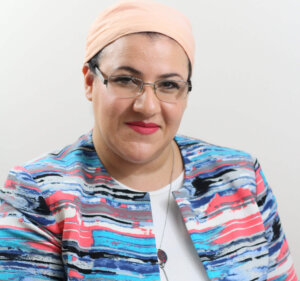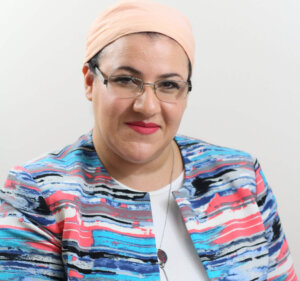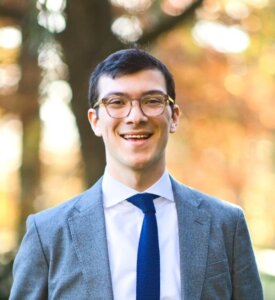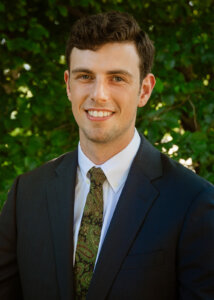Uncategorized
Hebrew Israelites and Jews of color are not the same, and it’s not racist for us to say so
(JTA) — Conservative-Masorti Judaism strives to accommodate the rich diversity of the Jewish world. A crucial part of this mission is ensuring that Jews of color feel welcome in our communities and heeding the call for racial justice. The voices of Jews of color must be heard in our movement.
In that spirit, we — representatives of the Rabbinical Assembly and United Synagogue of Conservative Judaism — register our profound disquiet about the conflation of Jews of color and those who identify as Hebrew Israelites, Israelites, or another derivative of the religion.
The recent hiring of both an associate rabbi and a rabbinical intern at a Conservative movement-affiliated synagogue in Newark, New Jersey, raise serious concerns about the intersection between mainstream Judaism and Hebrew Israelites. Both men trained at the Israelite Rabbinical Academy in Queens, New York.
While we have great respect for other faith traditions, Hebrew Israelites and Jews are not members of the same religion. The Hebrew Israelite faith emerged in the 19th century from some in the African Diaspora, who, asserting historic ties to Abrahamic ancestry, appropriated aspects of Judaism into a novel faith. Hebrew Israelite factions run the gamut from those whose militant messianism includes overt disdain for Jews to those who have adopted practices that closely resemble those of mainstream Jewish denominations. The International Israelite Board of Rabbis seeks to distinguish their segments of the faith from practitioners who openly espouse antisemitic rhetoric, and we acknowledge that those under the purview of the board include some who have undergone conversion to mainstream Jewish denominations while still keeping — and occasionally deepening — their ties with their Israelite communities.
Nevertheless, Hebrew Israelites, even those whose rituals mirror normative Jewish ones, are not Jews according to halacha, Jewish law as understood and followed by the Conservative movement and indeed most Jewish denominations.
By the same token, Israelite clergy — who are called rabbis according to the seminaries that ordain them — are not appropriate to lead a Jewish congregation. And the Israelite Board of Rabbis’ rejection of factions that preach disdain for Jews does not make it a recognized movement of worldwide mainstream Jewry, nor does it affect the halachic status of its members or the congregants under their guidance.
Some Hebrew Israelites have attributed their exclusion from normative Jewish spaces to racism. This undercuts the legitimate concerns and needs of Jews of color — authentic members of our people.
Jewish institutions have a duty to be inclusive, especially vis-a-vis those who have historically been marginalized inside our institutions. In formulating a response to the inclusion of Israelites as clergy in one of our movement’s congregations in Newark, we have listened with care to the Jews of color in our fold. Jewish denominations have their own age-old criteria for membership in the Jewish people: The Conservative movement demands either continuous matrilineal descent — that is, that one’s mother is a Jew according to halacha — or a valid conversion. There are many Black Jews who fit this criteria and are respected members of our community and covenant. Being non-white — or presenting as non-white — does not supersede these standards for Jewishness, any more than it should create further barriers.
Of course, Hebrew Israelites who can trace Jewish matrilineal ancestry or undergo a halachic Jewish conversion are counted within the Conservative movement as Jews.
When Hebrew Israelites and their supporters cite racism as the essential cause of their rejection from mainstream Jewish institutions, they usurp intracommunal grievances of Jews of color and seek to dispossess Jews of color from our community’s genuinely shared heritage and identity. They also harm the cause of racial justice and inclusion in our movement. Jews of color must not be conflated with Hebrew Israelites on account of race — this detracts from their halachic status as Jews in good standing and falsely defines religious ties in terms of race.
Black Jews may share racial ancestry with practitioners of the Israelite faith, but they do not share a common religious nor community identity. This misunderstanding can cause real harm, such as the alienation that occurs when fellow Jews of colors are told that they would better “fit in” with Israelite communities — insinuating that Black Jews aren’t truly Jewish.
The labor of racial justice is hard and ongoing — demanding nuance and compassion from each of us. Jews of color hold space for Hebrew Israelites who wish to fully pursue membership within normative Judaism. No racial barriers should block such individuals from joining the Jewish community and covenant. Further resources will be forthcoming through USCJ channels to foster respectful discourse as we embark on this conversation on the intersections of Black and Jewish identities, and the discussion can begin with a broad overview from USCJ’s Racial Justice & Inclusion page.
Institutional Jewish life, particularly in North America, is tinged with racism, and that does affect Jews of color. The RA and the USCJ are proud to be working together to address Jews of color inclusion in Conservative Jewish spaces and inter-communal racial justice initiatives as a part of Conservative Jewish practice. In order to do so with integrity, it is imperative that we lay down this marker: Black and African-American Jews assert that Jewish racial justice and inclusion efforts are counterproductive when they include or misrepresent Hebrew Israelites as Jews of color.
They are simply not the same.
—
The post Hebrew Israelites and Jews of color are not the same, and it’s not racist for us to say so appeared first on Jewish Telegraphic Agency.
Uncategorized
How the next generation of rabbis is preparing for the age of A.I.

Denise Blumenfeld’s AI learning tool doesn’t have all the answers — or at least it’s not so eager to give them away. Instead, Blumenfeld, a second-year student at the Orthodox women’s seminary Yeshivat Maharat, has customized ChatGPT to answer her with questions with a question.

I watched recently as Blumenfeld fed a paragraph of Talmud into the module, aptly named Socrates Havruta (its surname is Hebrew for study partner). Its response tested her reading comprehension: Based on the first line of the text, what is the basic obligation around candlelighting? Blumenfeld typed in an answer, which Socrates affirmed before asking another.
She knew ChatGPT could simply summarize the text, but would that really help her learn it? On the other hand, responding to questions could help someone figure things out on their own. And to keep herself honest, she’d set a rule: “I always try to read the authentic source first,” she told me.
Blumenfeld is part of the first generation of rabbinical students who are training with artificial intelligence tools like OpenAI’s ChatGPT and Google Gemini at their disposal — and hoping to avoid those tools becoming a crutch. But the beit midrash, or study hall, is just one of many contact points they have with an invention that may be changing not only what it means to be a student or a rabbi, but also what it means to be Jewish.
To get a sense of how AI is helping shape the next generation of the rabbinate, I interviewed students from five U.S.-based rabbinical schools about how use and think about AI in relation to their work. Their attitudes ranged from guarded enthusiasm to flat rejection. But their comments — and the boundaries they had each set around their personal use — revealed the deep influence AI is already having on their professional and religious outlook.
This was true even for students who did not use generative AI at all. Adrian Marcos, a student at the Ziegler School of Rabbinical Studies, listed moral reasons he avoided it, among them its exploitation of stolen data, its environmental impact, and the digital literacy crisis it was accelerating. Yet Marcos admitted that the burden of explanation fell on AI’s detractors, not its enthusiasts.
“A lot of people are very into AI, and as a rabbi, whether or not you end up in a pulpit, you have to converse with those people,” said Marcos, a second-year student at the Conservative seminary. “And as the technology evolves, the conversations around it are also going to evolve.”
Hacking the sermon

ChatGPT can seemingly draw on the entire digitized Jewish canon, translate it from Hebrew if necessary, and draft new content about it. For students pursuing the rabbinate because of their passion for seeking and sharing knowledge themselves, the question was whether a tool that lightened the load was really helping.
Aiden Englander, a fourth-year at Yeshiva University’s Rabbi Isaac Elhanan Theological Seminary, engages ChatGPT for on-call intellectual companionship. Upon finding an interesting commentary on the week’s Torah portion, he’ll ask ChatGPT for secular variations on the idea. It might spit out Nietzsche, he said, or a recent news story.
Knowing ChatGPT can make such a connection unlocks a different level of rhetorical ambition — serving as a kind of academic force-multiplier — but it forecloses the possibility of, well, sorting out his concept without it. It also raises the question of what makes a sermon “better,” and whether literature you’ve only learned about via ChatGPT summary is any less suitable for a sermon than a volume you’re still working through on the page.
Englander’s calculus was straightforward. “When you’re able to quote a book that someone is familiar with, they’ll remember it more,” he said.

Though an avid user, he harbors doubts about AI’s reliability. “It will just completely make up a Gemara,” he said, and in his view its knowledge is especially shallow in matters of Jewish law. Yet what ChatGPT can do is what makes Englander, who is 24, most cautious. In a creative pinch, he’ll ask it to bullet-point some possible themes to explore from that week’s Torah portion to write a sermon about. But that’s a muscle he’s conscious about developing, so he tries to desist.
Yet a theological question about AI use persists underneath the utilitarian concerns. Is a ChatGPT-generated d’var torah a bad idea because it’s likely to spew cliches or degrade one’s writing ability — or because the very notion of a computer recommendation defeats the purpose of the exercise, which is to bring human experience to bear upon the Torah and vice versa? Major Jewish denominations have been as quiet on the religious questions around AI as rabbinical schools have been on the practical ones, leaving students to work out both problems on their own.
“An LLM doesn’t have autobiography — it’s not having a faith experience,” said Dani Pattiz, a second-year student at Hebrew Union College. “It can come up with these brilliant syntheses of other people’s ideas. But at the end of the day, it can’t genuinely glorify God, or speak to people’s souls in an authentic way.”
A changing pulpit
As they navigated their own use of AI, rabbinical students were pondering how it would reshape the lives of their future congregants, and in turn, their own work.
On a recent trip to Washington, Micah Glickman, a rabbinical student at Hebrew Union College, the flagship Reform seminary, visited a synagogue where a number of congregants had been laid off in DOGE’s federal job cuts. AI’s impact on employment, he realized, could be exponentially greater. If that were the case, it was not merely that more people would be facing financial and emotional vulnerability. It was also that a universal source of human fulfillment might have an expiration date.

“It seems like the promise of this technology is to basically do anything that a person can do, and do it better than that person can,” Glickman said in an interview. “And I wonder how that will affect a congregation of people who maybe derive a sense of meaning and purpose from their accomplishments in life.”
It would fall on rabbis and other faith leaders, Glickman said, to shepherd their communities through this change. “There’s some impending spiritual crisis that we’re on the verge of,” he said. He was helping organize a symposium at HUC to consider these and other AI-related issues — seeking a spiritual solution, he said, to a spiritual problem.
Meanwhile, he was already encountering ChatGPT-written bar mitzvah speeches from the students he tutors. That put him in the position of his HUC professors: Should he discourage kids from using it, or — conceding to inevitability — try to steer them towards using AI responsibly?
It was a theme across interviews: The future rabbis I spoke to were more worried about how the generation after them would learn than they were about their own trajectories. Today’s students, after all, largely passed their studies prior to rabbinical school without ChatGPT; they were wary of atrophy only because they knew they had muscles to begin with.
Even Blumenfeld, the Maharat student, was not sure she would recommend her Socrates bot to younger students. “Because I had experience learning and teaching before AI, I know what the result I’m looking for is, and know how to ask the right thing,” she said, whereas kids at that age hadn’t yet developed those skills. “As teachers,” she added, “we need to learn how to teach.”
They also need to teach how to learn, and why to learn. YU’s Englander recalled a thought experiment shared decades ago by the university’s former president Rabbi Norman Lamm: If you could implant a microchip into your brain that gave you complete knowledge of the Torah, would you ever have to learn? Lamm’s opinion was that learning in fact had primacy over knowledge — that the toil of studying the Torah was not just a means to an end, but a form of worship in and of itself.
“This might be a little bit more of a mystical notion, but from the standpoint of accessing Hashem, it’s only accomplished through learning the text and struggling with it, not being told what the text says by a third party,“ Englander said. The reason he could generally detect when ChatGPT was hallucinating the Talmud, he added, was because he had put in the hours studying it himself.
The post How the next generation of rabbis is preparing for the age of A.I. appeared first on The Forward.
Uncategorized
Belgium Joins South Africa’s Genocide Case Against Israel at UN Court

A general view inside the International Court of Justice (ICJ), at the start of a hearing where South Africa requests new emergency measures over Israel’s operations in Rafah, in The Hague, Netherlands, May 17, 2024. Photo: REUTERS/Yves Herman
Belgium officially became the latest country to join South Africa’s genocide case against Israel at the United Nations’ top court on Tuesday, as international pressure mounts on the Jewish state despite a US-backed ceasefire that has so far paused the two-year conflict in the Gaza Strip.
The International Court of Justice (ICJ) announced that Brussels has requested to join the South African case by filing a declaration of intervention, allowing it to participate without being the original plaintiff.
Belgium joins several other countries in the case, including Brazil, Colombia, Ireland, Mexico, Spain, Turkey, Cuba, Libya, Bolivia, the Maldives, Chile, and “Palestine.”
Earlier this year, South Africa vowed to continue its genocide case against Israel despite the ceasefire in Gaza, the most significant effort yet to halt the two-year Middle Eastern conflict.
Speaking before parliament in Cape Town, South African President Cyril Ramaphosa affirmed that the US-backed peace deal “will have no bearing” on the ongoing legal proceedings against the Jewish state.
Ramaphosa promised to continue seeking “justice for the people of Gaza,” while reiterating false accusations that Israel committed genocide under international law during its defensive military campaign against the Palestinian terrorist group Hamas.
Israel has strongly rejected all allegations of genocide, calling South Africa’s case “baseless” and “politically motivated.”
Ramaphosa’s continuing push comes amid ongoing international pressure, with the US, South African political leaders, and the local Jewish community all expressing opposition to his government’s actions, accusing it of pursuing an anti-Israel campaign instead of addressing the country’s own pressing issues.
Since December 2023, South Africa has been pursuing its case at the ICJ accusing Israel of committing “state-led genocide” in its defensive war against Hamas in Gaza.
Israeli leaders have condemned the case as an “obscene exploitation” of the Genocide Convention, noting that the Jewish state is targeting terrorists who use civilians as human shields in its military campaign.
Meanwhile, South Africa’s Jewish community have lambasted the case as “grandstanding” rather than actual concern for those killed in the Middle Eastern conflict.
Last year, the ICJ ruled there was “plausibility” to South Africa’s claims that Palestinians had a right to be protected from genocide.
However, the top UN court did not make a determination on the merits of South Africa’s allegations, which may take years to go through the judicial process, nor did it call for Israel to halt its military campaign.
Instead, the ICJ issued a more general directive that Israel must make sure it prevents acts of genocide. The ruling also called for the release of the hostages kidnapped by Hamas during the terrorist group’s invasion of and massacre across southern Israel on Oct. 7, 2023.
Uncategorized
US Professor Who Was Suspended After Calling for ‘War on Israel’ Requests Reinstatement in Lawsuit

Illustrative: A student puts on their anti-Israel graduation cap. Photo: Angelina Katsanis via Reuters Connect
A University of Kentucky professor who is serving an interim suspension for promoting an antisemitic petition which called for “Palestine everywhere from the Jordan River to the Mediterranean See” on Friday asked a US federal judge to reinstate him even as an investigation into his remarks is ongoing.
The instructor, Ramsi Woodcock, teaches at the University of Kentucky J. David Rosenberg College of Law. In July, he shared a petition which implored “every country in the world to make war on Israel until such time as Israel has submitted permanently and unconditionally to the government of Palestine.” Using a variation of the “from the river to sea, Palestine will be free” slogan that has become a signature of anti-Zionist groups around the world, he echoed language that has been widely recognized as calling for the destruction of Israel, the world’s lone Jewish state.
Woodcock also self-identifies as an “antizionist scholar of law and economics” on his website, where he introduces himself as a scholar “who recognizes that my country is currently committing a genocide of Palestinians through the colony that we maintain in Palestine called the ‘State of Israel.’” The academic goes on to state, “I oppose the genocide and the existence of that colony. I believe that the international community has a moral and legal duty to go to war to liberate Palestine and end Israel.”
The University of Kentucky responded to the incident in July by suspending Woodcock and banning him from campus, citing his “disturbing conduct” and “calling for the destruction of a people based on national origin.” In reaching a decision, the university drew from state guidance based on the International Holocaust Remembrance Alliance (IHRA) definition of antisemitism as well as its own principles.
“We condemn any call for violence and the views expressed online certainly do not represent the institution’s views. They express hate,” university president Eli Capilouto said in a statement. “While someone in his or her personal capacity may be free to express themselves, the university is also free to make clear that the individual’s personal views are not those of our community.”
Citing the university’s obligations under Title VI of the US Civil Rights Act, he added, “Let me be clear: the views expressed by this employee, if accurately attributed, are repugnant. Importantly, too, if such individual expressions threaten the safety and well-being of the university’s students and staff, we are obligated to act to protect our community and our people.”
Woodcock sued the university in November, arguing that the decision to suspend him violates his First Amendment rights and “degrades the quality of education the University of Kentucky.”
In his latest legal action, Woodcock, testifying on Friday at the US District courthouse in Lexington, Kentucky during an evidentiary hearing, demanded to be allowed to teach during this upcoming spring semester and denied the allegations against him. For its part, the university continues to pay his salary but maintains that he must remain inactive until it concludes its investigation into his alleged misconduct.
The judge presiding over the case, Danny C. Reeves, did not issue a ruling, as he is awaiting the filing of two additional motions calling for the lawsuit’s dismissal or abeyance, pending the outcome of the university’s investigation. According to the Kentucky Lantern, he did say in court that Woodcock’s team has failed so far to show a “nickel’s worth of harm.”
Following the hearing, the university said, “We were pleased to defend the university’s decisions to investigate Professor Woodcock and to reassign him during the investigations.”
Woodcock is not the first professor to face disciplinary sanctions for using the campus as a platform for calling for violence against Jews.
In September, Cornell University canceled the course of a professor who according to the school violated federal anti-discrimination law when he expelled an Israeli student from class. Later, the professor reached an agreement with the administration which allowed him to retire rather than serve out his punishment.
According to a recent survey conducted by the Anti-Defamation League (ADL) and the Academic Engagement Network (AEN), university faculty and staff have exacerbated the antisemitism crisis on US college campuses by politicizing the classroom, promoting anti-Israel bias, and even discriminating against Jewish colleagues.
The actions by faculty provided an academic pretext for the relentless wave of antisemitic incidents of discrimination and harassment which pro-Hamas activists have perpetrated against Jewish and Israeli members of campus communities since the Hamas-led Oct. 7, 2023, massacre across southern Israel, according to the survey, released in September.
The survey of “Jewish-identifying US-based faculty members” found that 73 percent of Jewish faculty witnessed their colleagues engaging in antisemitic activity, and a significant percentage named the Faculty and Staff for Justice in Palestine (FSJP) group as the force driving it. Of those aware of an FSJP chapter on their campus, the vast majority of respondents reported that the chapter engaged in anti-Israel programming (77.2 percent), organized anti-Israel protests and demonstrations (79.4 percent), and endorsed anti-Israel divestment campaigns (84.8 percent).
Additionally, 50 percent of respondents said that anti-Zionist faculty have established de facto, or “shadow,” boycotts of Israel on campus even in the absence of formal declaration or recognition of one by the administration. Among those who reported the presence of such a boycott, 55 percent noted that departments avoid co-sponsoring events with Jewish or pro-Israel groups and 29.5 percent said this policy is also subtly enacted by sabotaging negotiations for partnerships with Israeli institutions. All the while, such faculty fostered an environment in which Jewish professors were “maligned, professionally isolated, and in severe cases, doxxed or harassed” as they assumed the right to determine for their Jewish colleagues what constitutes antisemitism.
In September 2024, AMCHA Initiative, an education nonprofit, published a groundbreaking study which showed that the FSJP is fueling antisemitic hate crimes, efforts to impose divestment on endowments, and the collapse of discipline and order on college campuses. Using data analysis, AMCHA researchers said they were able to establish a correlation between a school’s hosting an FSJP chapter and anti-Zionist and antisemitic activity. For example, the researchers found that the presence of FSJP on a college campus increased by seven times “the likelihood of physical assaults and Jewish students” and increased by three times the chance that a Jewish student would be subject to threats of violence and death.
Follow Dion J. Pierre @DionJPierre.

